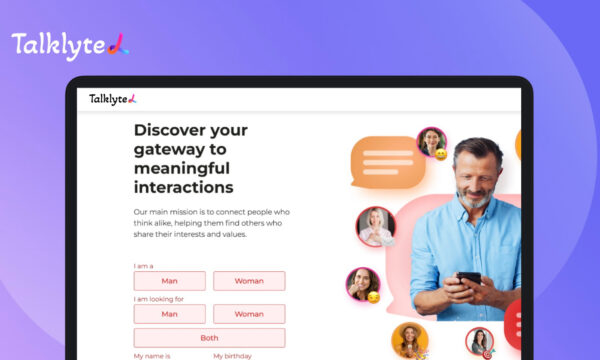The pros and cons of cloud gaming

In the dynamic world of video gaming, the advent of cloud gaming marks a significant paradigm shift, redefining how games are played, distributed, and accessed. Cloud gaming, often likened to the ‘Netflix for games’, allows gamers to stream games directly from the cloud, bypassing the need for powerful hardware. This innovation has been brewing since the early 2000s, but it’s only in recent years, with advancements in internet speed and cloud technology, that it has truly begun to flourish. This article delves into the multifaceted realm of cloud gaming services, examining their impact on the gaming industry and on gamers themselves. From the convenience of accessing a vast library of games to the challenges posed by internet connectivity and latency issues, we explore the various pros and cons of this emerging technology. As we venture into this new era of gaming, it’s crucial to understand how cloud gaming is transforming the landscape of digital entertainment.
Advantages of cloud gaming
Cloud gaming is revolutionising the gaming world with its unparalleled accessibility and convenience. It allows players to enjoy their favourite games on any device that has an internet connection, from smartphones to smart TVs, eliminating the need for multiple gaming consoles or a high-end PC. This accessibility opens up gaming to a broader audience, making it more inclusive than ever. Another significant advantage is the elimination of the need for high-end hardware. Traditional gaming often requires substantial investments in the latest gaming rigs or consoles, but cloud gaming mitigates these costs, as the heavy lifting is done on remote servers. Additionally, cloud gaming services ensure that games are always up to date. Automatic updates and patches are applied seamlessly, saving gamers from the often tedious process of manually updating their games. Lastly, the vast game libraries available through subscription models – or portals as shown on CasinoHowto – provide gamers with an extensive variety of titles at their fingertips, ranging from blockbuster hits to indie gems, ensuring there’s something for everyone.
Challenges and cons of cloud gaming
Despite its advantages, cloud gaming faces significant challenges. One of the primary concerns is latency and the dependence on a stable, high-speed internet connection. Even a slight delay between the player’s action and the game’s response can significantly affect gameplay, especially in fast-paced genres. This reliance on internet connectivity means that the quality of the gaming experience can vary greatly based on the user’s location and internet speed. Another issue is the variability in streaming quality. While some users may experience high-definition gameplay, others might suffer from lower resolutions or reduced graphical fidelity, depending on their bandwidth. Furthermore, cloud gaming raises questions about game ownership and availability. Unlike physical or downloaded copies, access to games is often tied to a subscription, leading to concerns about long-term access to purchased games. Lastly, cloud gaming typically offers limited support for mods and community-created content, which are integral parts of the traditional PC gaming experience. This limitation can dampen the richness and diversity that mods bring to the gaming world.
Challenges and cons of cloud gaming
Cloud gaming, while innovative, faces significant challenges. The most prominent is latency and internet dependence. A high-speed, stable internet connection is crucial for a seamless gaming experience, as latency can drastically affect game responsiveness, particularly in genres requiring quick reflexes. This reliance on internet quality means that gamers in areas with poor connectivity are at a disadvantage. Another concern is the variability in quality of service. Depending on bandwidth, players may experience fluctuations in streaming quality, leading to potential compromises in resolution and graphical fidelity. Additionally, the model of cloud gaming brings forth concerns about game ownership and availability. Unlike traditional gaming, where players own physical or digital copies of games, cloud gaming often relies on subscriptions, raising questions about long-term access to games and control over one’s gaming library. Lastly, cloud gaming generally offers limited support for mods and community content, a staple in the traditional PC gaming world. This restriction can limit the richness of the gaming experience and the engagement of the gaming community.
Comparative analysis: Cloud gaming vs traditional gaming
When comparing cloud gaming to traditional PC and console gaming, several key differences emerge. Cloud gaming excels in accessibility, allowing gamers to play on various devices without the need for high-end hardware. This contrasts with traditional gaming, where the quality of experience is often tied to the capabilities of one’s gaming system. For casual gamers, cloud gaming offers an easy entry point, with its convenience and wide game selection via subscription services. However, hardcore gamers might prefer traditional gaming due to its reliability, higher quality of graphics, and the ability to mod and customise games. Traditional gaming also offers a sense of permanence in game ownership, unlike the more transient nature of cloud-based game libraries. Overall, while cloud gaming is more accessible and convenient, traditional gaming remains the choice for those seeking a more stable and customisable gaming experience.
The future of cloud gaming
The future of cloud gaming is poised for exciting developments, driven by emerging trends and technological advancements. As internet speeds and cloud technologies continue to improve, many of the current limitations around latency and streaming quality are likely to diminish, making cloud gaming more appealing and accessible. The role of major players in the industry, such as Microsoft, Sony, and Google, will significantly influence the direction of cloud gaming. Their investment in infrastructure and game libraries will be crucial in determining its success and adoption. Another key factor will be the evolution of game development practices to optimise for cloud-based platforms, potentially leading to games that are exclusively designed for cloud gaming environments. As these trends unfold, cloud gaming could significantly reshape the gaming landscape, offering new forms of interaction, distribution, and gameplay experiences. The potential for cloudp gaming to democratise access to high-quality gaming experiences and to introduce new business models makes it a fascinating field to watch in the coming years.
The editorial unit



















Facebook
Twitter
Instagram
YouTube
RSS